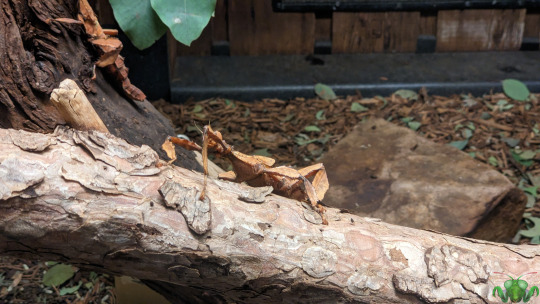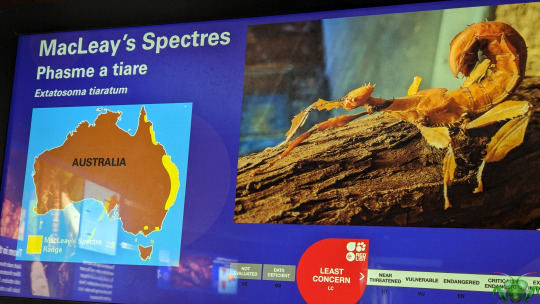#capitulum
Explore tagged Tumblr posts
Text
Randomly Selected Botanical Terms: Phyllaries
Flowers in the aster family have one of the most recognizable shapes in botany – a circle with a series of petals surrounding it. If you were asked to draw a flower, there is a good chance your drawing would look something like a sunflower, a daisy, a cosmos, or an aster. It’s one of the most basic flower shapes, and yet it isn’t a single flower; it’s a pseudanthium – a false flower. This is…

View On WordPress
#Asteraceae#blanketflower#botanical terminology#Botany#bracts#capitulum#Compositae#composites#curlycup gumweed#dandelion#florets#flower head#flowers#hoary tansyaster#involucre#Mexican sunflower#phyllaries#plant anatomy#plants#sunflower family
42 notes
·
View notes
Text




CTF-BT-Capitulum
3 notes
·
View notes
Text
If you've been following Town & Country by @charminglygrouped — hi! You have found the
✨ Darcy Hate Club ✨
With the Hunsford Proposal on the horizon, and considering all the stupid shit he's already said and done, how better to prepare for this great, frustrating event by running a
Dimwit Darcy Bullshit Bingo
Together, we shall be anticipating the kaleiscope of colossally stupid shit our favourite dimwit is likely to say, do, or think to-at-about Elizabeth when the times comes!
How does it work?
Reblog, comment, or tag your suggestion for a scenario fitting any of the categories below:
Stupid Shit Darcy Will Be Doing (to Elizabeth; during the proposal);
Stupid Shit Darcy Will Be Saying (to Elizabeth; during the proposal);
Stupid Shit Darcy Will Be Thinking (about Elizabeth; her family/loved ones; during the proposal).
The more specific, the better! After all, Darcy can be a pretty inventive / unaware arsehole if he so choses!
Those will make the options for our bingocard!
There's no deadline (yet), as I don't know when the Capitulum Horribile is about to drop. But we can safely assume it's still going to be a while.
[assuming that C.H. will be the finale to Vol. II, and taking into account that Vol. II will be at least as long as Vol. I {charming already mentioned it's turning out even longer}, we're still ~ 10 chapters {i.e. 5 weeks} away from T=0. So. We've got time.]
#pride and prejudice#jaff#author: charminglygrouped#fic: town and country#Darcy Hate Club#ao3 fanfic#Dimwit Darcy Bullshit Bingo
61 notes
·
View notes
Text
Inflorescence—the mode of development and arrangement of flowers on an axis; the budding and unfolding of blossoms; flowering
Illustration of Inflorescence

Raceme - a simple inflorescence (as in the lily of the valley) in which the flowers are borne on short stalks of about equal length at equal distances along an elongated axis and open in succession toward the apex
Corymb - a flat-topped inflorescence, specifically: one in which the flower stalks arise at different levels on the main axis and reach about the same height and in which the outer flowers open first
Umbel - a racemose inflorescence typical of the carrot family in which the pedicels arise from about the same point to form a flat or rounded flower cluster
Compound umbel - all the umbel inflorescences arise from a common point and appear to be at about the same level (e.g., wild carrot)
Capitulum - a racemose inflorescence (as of the sunflower) with the axis shortened and dilated to form a rounded or flattened cluster of sessile flowers
Spike - an elongated inflorescence similar to a raceme but having the flowers sessile on the main axis
Compound spike - is known as the spike of spikelets. Sessile flowers (spikelets) are present on the branched main-axis. Examples: wheat, barley, sorghum, oats.
Panicle - a pyramidal loosely branched flower cluster
Cyme - an inflorescence in which each floral axis terminates in a single flower, especially: a determinate inflorescence of this type containing several flowers with the first-opening central flower terminating the main axis and subsequent flowers developing from lateral buds
Sources: 1 2 3 Word Lists: Flowers ⚜ Garden ⚜ Victorian Flower Language
#inflorescence#writing reference#spilled ink#dark academia#nature#flowers#writeblr#literature#art reference#writers on tumblr#writing prompt#poetry#poets on tumblr#writing inspiration#creative writing#writing ideas#studyblr#langblr#linguistics#writing resources
67 notes
·
View notes
Note
ehehehe top 5 favorite bones? 👀
OH thank you for this. probably the easiest top 5 I've ever done. not in any particular order:
1. humerus: i LOVE the way the head is so smooth and then elongates and it has a bunch of fun stuff going on near the condyles. trochlea and capitulum my beloved
2. femur: it's super thick. weighty. i love how it's heavy and hefty and you can kind of smack people with it and the condyles again are so fun. little handles. i love holding a femur by the neck and kind of swinging it around and the head is so....round. so ball like. my finger is always resting in the little notch at the top of the head and another wrapped around the neck
3. patella: i like that it's a bit lopsided and you can flip it like a coin. great for fiddling with
4. clavicle: boomerang
5. fibula: thin and long and veryyyy fun to smack people with. also a bit sharp tho so gotta be careful but it's the equivalent of a riding crop just. in your leg. LOL
bonus: i love the greater sciatic notch of the pelvis and how your hands can fit so perfectly around it. the junction between your thumb and forefinger is literally made for that. unfortunately all the muscle gets in between but i yearn to hold someone by their sciatic notch i think it'd be so great
9 notes
·
View notes
Text
non duco, ducor - a Heroes of Olympus fanfic

It's time! After over a year (oops) I'm finally getting this up! I have tagged everyone who showed interest in the original post, so if you're no longer interested, just send me a message and I will happily take you off the tag list! This post will serve as a table of contents for the whole series. Click on each link to access the chapters. I will be cross posting this on A03 in the future, so I will add those links here once I get to that. All content for this story is below the cut! Tag List: @starsupontharss @irlkatiegardner @shattered-glasswork @octaviantheloser @afdg10 @augustuscaesarsalad @hya-lina @pjo-hoo-toa-freakazoid @praetorialreject @littlestarbeam @gillagully @eggpeepee @sphinx-musings @blagam0nie @pomnenka-kyticka @zazzander @captains-parrot @ilikepjo24 @m-for-now @alias-beta-cecilia @jg-ggw @f0xgl0v3 @reuben-7991 @summerfandoms @accionbox5050 @axo-lotl-of-work @shroomie-23 @etheravenlivrenvari @zieken08 @w3ndytheraccoon @maagisa @sabrinisnotokay @irlkatiegardner @i-dont-exist-people @cinnamonheartsvibes @flower-zs @ilikethins-0 @murderspugerter-ver2 @emperor-xerneas @panislumens @actuallyspeechless @atomboyishgirl @i-am-traveling-the-multifandom @ceruleandinosaur @dubiouslygaia @forthetaintedgay @jzciuxux @cuppa-noodle @bigpp6999 @imaliveboys @doctor-rat @octavianno1defender

[Latin Translation references: Capitulum = Chapter
Non Duco, Ducor = I do not lead, I am led}

Capitulum I - At The Altar of Jupiter
12 notes
·
View notes
Text

William of Saint-Thierry. Fragment from a letter to Bernard of Clairvaux (maculature). One sheet of sturdy parchment, 30 x 19 cm. Written on both sides in two columns with auxiliary lines. Gothic letter with closed a, long s and f with tails. Many ligatures. Dark brown and red ink. Rubricated. Probably ca. 1400. The sheet was probably used as binding reinforcement, with a strong fold. Two holes in the margin may have a natural cause.
* Chapters from De sacramento altaris, from …’rerum istaque diversitatem caritas redigit in unitatem’ up to and including ‘male intellecta materiam errandi vel contendendi perdi[tis videntur prestare]’. The chapters are written in red: Capitulum XI and duodecimum (‘chapter eleven’ and ‘twelfth’; in the Patrologie caput X and XI!). This text can be found in part 180 of the Patrologia (1855), p. 357-359. The text is not exactly the same.
Higher theology from the beginning of the twelfth century. The prolific Willam, abbot of Saint-Thierry (an abbey near Reims), was the man who took up arms against Peter Abelard and was at the beginning of the movement that had his writings condemned as heretical.
6 notes
·
View notes
Text

World Map!
Was this unnecessary? Yes. Definitely. I did not have to make this whole map for my worldbuilding stuff, I really didn’t, but it makes things so much easier to visualize!
Now when I talk about geopolitics I can point to a map and say “this one right here, that’s the dictatorship that is horribly xenophobic and has a massive ego but gets away with it because good trade relations!” (Top right, if you were curious)

I worked this place ground up from plate tectonics and placed biomes with the help of geological features and ocean currents. I couldn’t poured rice onto a piece of paper and traced it, but a reason for everything!
I will admit that it is quite inaccurate and probably needs to be reworked, but I’m very proud.
Now, the nations in this world have been jam packed with lore, and while I’d love to ramble about that here, it would take forever and be an organizational nightmare.
But then again, giving you a map with names, telling you it’s cool, and then telling you I’ll elaborate maybe some other time is anticlimactic, sad, droll what have you, and I don’t want this to be any of those things!
So, instead, I’ll give you a reason to stay tuned…
With some wonderful highlights of what’s to come!
Introducing:
Aureole!
Self proclaimed “City of Sunshine” smack in the middle of a hellscape of their own making! They have lots of territory, most of it inhabitable!
Viru!
The only city where magic isn’t outlawed, and also drives half the economy by supplying the black market which everyone else pretends to hate!
Transoceanic Links!
Neutral territory, very hard to live in. Natural habitat of sea serpents and pirates.
Senit!
They haven’t noticed the entire secret city under the mountain range yet, and they probably never will!
Capitulum!
They built their capital on a giant tree! Bad design? Maybe! But it doesn’t seem to be anywhere close to dying yet.
Township of Nivalis!
Not a lot of land, but a really scary Navy.
16 notes
·
View notes
Text
Ecce capitulum penultimum....
10 notes
·
View notes
Text
Diluculo - Capitulum Ravus
Ravus chapter is up!
https://archiveofourown.org/works/63271264/chapters/170895130
I put a baffling amount of effort into it, not sure why. But hey, growth. I hope. Comments appreciated... 🙏✨
2 notes
·
View notes
Text
From The Laws Of King Stephen I. About The Christian Religion And Church (addendum to Hungary At Point Zero)
From the first law code of king Stephen 8. The observance of the Lord’s day. If a priest or ispán, or any faithful person finds anyone working on Sunday with oxen, the ox shall be confiscated and given to the men of the castle to be eaten; if a horse is used, however, it shall be confiscated, but the owner, if he wishes, may redeem it with an ox which should be eaten as has been said. If anyone uses other equipment, this tool and his clothing shall be taken, and he may redeem them, if he wishes, with a flogging. 9. More on the same Priests and ispánok shall enjoin village reeves to command everyone both great and small, men and women, with the exception of those who guard the fire, to gather on Sundays in the church. If someone remains at home through their negligence let them be beaten and shorn. 10. The observance of Ember days If someone breaks the fast known to all on Ember days, he shall fast in prison for a week. 11. The observance of Friday If someone eats meat on Friday, a day observed by all Christianity, he shall fast incarcerated during the day for a week. 12. Gathering at church and those who mutter or chatter in church during mass. If some persons, upon coming to hear the divine service, mutter among themselves and disturb others by relating idle tales during the celebration of mass and by being inattentive to Holy Scripture with its ecclesiastical nourishment, they shall be expelled from the church in disgrace if they are older, and if they are younger and common folk they shall be bound in the narthex of the church in view of everyone and punished by whipping and by the shearing off of their hair.
From the second law code of king Stephen 1. The royal contribution to a church. Ten villages shall build a church and endow it with two manses and the same number of bondmen, a horse and mare, six oxen, two cows, and thirty small animals. The king shall provide vestments and altar cloths, and the bishop the priests and books. 20. On tithes If in a year God has given ten parts to anyone, he shall give one-tenth to God. If anyone evaded rendering his tithe, he shall pay nine. And if anyone shall have stolen the tithe reserved for the bishop, he shall be judged as a thief, and the entire composition shall belong to the bishop.
(Note: THIS IS NOT MY TRANSLATION. I would not dare try my hand at translating a Slovak translation of the Latin primary sources when there's a perfectly good English translation of the sources themselves. But I didn't want to leave it out either, since I see its inclusion in the original article as quite beneficial.
Credit to Capitulum, a medieval history research group at the University of Szeged: https://www.staff.u-szeged.hu/~capitul/oktatas/hung_soc/laws_of_stephen.pdf https://www.staff.u-szeged.hu/~capitul/capiteng.htm)
2 notes
·
View notes
Text




Family: Asteraceae 🌻🍃
Asteraceae species are generally easy to distinguish from other plants because of their unique inflorescence (capitulum)
20 notes
·
View notes
Text




Haven’t done much on my list, but I have done todays Latin homework! Pensum A, B, and C in Lingua Latina capitulum II. (I'm very thankful for the fact that this book is being used all over the world!)
Tomorrow I really want to:
Have copied my notes from maths (and maybe also scince if I'm feeling funky)
Nail the job interview
Set up my Notion-page
Make the mushroom soup
Not rot nor doomscroll
Things I have done this week:
Signed up for some student clubs
Talked to people other than my classmates
Sorted one drawer underneath my bed
Hopefully dodged salmonella
Honestly I'm just tired of not having a routine.
2 notes
·
View notes
Text










Spiny Leaf Insect - Extatosoma tiaratum
It's been many years since I've laid my eyes on one of these magnificent creatures, and even longer since my days at U of T where I held one in my hand. As such, it was gratifying to see so many individuals on display at the Toronto Zoo and to soak in all their details and movements (mostly wobbles and slow, methodical steps) while observing them. With many female individuals, and a few different instars among them, I should have taken a video, but there was lots of excited screaming in the background from children happy to see the otters and reptiles. As much as I love animals, this blog is all about the insects, and so today we have pictures of these Giant Prickly Stick Insects. Today, they are known by many names such as Australian Walking Sticks, Spiny Leaf Insects, Macleay’s Spectres (named for British entomologist William Macleay and referencing their order Phasmatodea, whose name is derived from apparitions or more commonly, ghosts) or E. tiaratum. You can call them many names, just don't call them "Leaf Insects" as those are a different branch of Phasmid, of the family Phylliidae. Amazing as that family is are, these large armored insects also have a certain special quality to them. Maybe it's just how large and unusual they are compared to our fauna, but I certainly think that they're eye-catching when they can actually be found and observed. In the wild, finding them could be more difficult since their mottled, spiked, dried-in-appearance leafy armor is meant to hide them from their predators.
These peaceful, plant-eating giants need every advantage they can secure since they aren't aggressive and are burdened with slow movement due to their armor. In most cases, if anything gets close, their "scorpion" posture combined with a mild chemical defense and their sharp spines may be just enough. But what if you're a thinner, more agile male? If you've been observant, there is one such darker individual in the background of Picture 1! They're quite different in appearance from females, being much smaller and they are also quite rare! Moreover, a mild reliance on using parthenogenesis to reproduce and lay eggs, they can become even rarer! The thin male has functioning wings and can use them when in danger by either flying away or flashing them to a predator, startling them. Naturally, wings also allow for a wider dispersal and an expansion to the search for fertile females. In an environment within captivity, the presence of a male may be likely to discourage parthenogenesis and in fertilized eggs that will hatch earlier after females drop them to the soil floor. There were no eggs to be found, so if you plan to visit and search for them, look for brown and white, seed-like objects fitted with a capsule-like projection (capitulum). They are likely to be removed and stored, as the eggs of E. tiaratum are reported to need cooler conditions to successfully hatch. Their terrarium may simulate a warm, tropical environment too well in that case. In the wild, Ants fulfill this condition, bringing the "seeds" underground into their cooler subterranean food stockpile.
These insects are exhibited in the Toronto Zoo, so I’ve marked them with the Mantis icon. Pictures were taken August 27, 2023 at the Toronto Zoo with a Google Pixel 4. Please go and visit the animals (insects very much included).
#jonny’s insect catalogue#ontario insect#stick insect#spiny leaf insect#macleay's spectre#phasmatodea#phasmid#insect#toronto#toronto zoo#august2023#2023#nature#entomology#invertebrates#arthropods#animals#photography
17 notes
·
View notes
Text
its capitulum upturned towards the sun
saturated with saltwater
something like a heartbeat
a pendulum under the canopy
it lays softly and holds and
carries your fare to you
2 notes
·
View notes
Text
LINGVA LATINA PER SE ILLVSTRATA - CAPITVLVM VNVM ET VICESIMVM
Post longa tempo de la lasta afiŝo, jen komentado pri la lernado. La ĉapitro nomiĝas "La Batalo de la Studentoj".

Ecce discipuli pugnaverunt: cum Sexto Marcus et Titus pugnaverunt. Tamen non est dictum qua de causa, at primum Sextus nasum Marci pulsavit. Eorum pugna in imbrem erat, et etiam humi iacuerunt. Propter Marcus revertitur domum inmundus et cum sanguine de naso fluente. Marcus atrium intrans vix cognoscitur a patre suo Iulius; ipse eum cognovit audens eius vocem. Non placet Iulio Marcus duo unum pulsavisse. Postremo Marcus parentibus suis ostendit tabellam et "me eas litteras scripsisse" dicit, sed tabella non Marci, sed Sexti est! Falsum est quod dicit Marcus. Mater eius statim filio suo credit, nec vero credit pater, quia scit filium suum bonus discipulus non esse.
Post ĉi historia priskribo kiun ŝatis mi skribi, jen ni iru al la komentoj.
La ŝajnsinonimaro
Mi eĉ nomis ĉi tian aferon pro ĝia ofteco. La ŝajn- komence estas pro tio ke, eĉ se diras la libro ke x = y, ne vere ke ambaŭ vortoj tute interŝanĝeblaj estas. Ĉar tute ne eblas ekscii la malsamecon per la libro nur, jen mi iris serĉi denove. Sed, ĉi-foje, ion alian mi decidis fari: anstataŭ per Guglo fari la serĉadon, mi decidis demandi al ChatGPT. Kaj, surprize, ĝi donis senchavan klarigon.
Jen la sinonimoj kun klarigo de malsameco:
mundus = purus - "mundus" al fizikaĵo rilatas, "purus", al abstraktaĵo
candidus = albus - "candidus" estas por mencii la brilecon kaj fortecon de io, dum "albus" estas nur pri la koloro mem, vere kiel diri "blanko" simple.
vestis = vestimenta - "vestis" estas individua vestaĵo, dum "vestimenta" estas kostumo, la aro da vestaĵo uzata
cruor = sanguis - "cruor" rilatas al sangverŝo, dum "sanguis", al sango fluanta en la vejnoj
Ĉiu priskribo perfekte kongruis kun la libra kunteksto.
Ankaŭ estas la verbo "aio", uzita kie mi pensus ke uzitus "dico". ChatGPT diras ke "aio" uzatas por mencii ekzaktajn vortojn ies, dum "dico" estas io pli ĝenerala, kiel verbo nia "diri", mi kredas. Kaj denove ĉi tio kongruis perfekte kun la libra situacio, kie la verbo "aio" uzitas kiam Emiliino demandas Julion kion li ĵus diris, kaj li respondas ripetante la ĵusdiraĵon.
Tamen, kio pri "inquit", kiun estas sintakse uzita kiel "aio"? Ĉi-foje donas ChatGPT ne tiel fidindan respondon, sed ankoraŭ kredeblan, ke ambaŭ signifas la samon, sed ke "inquit" estas pli formala kaj literatura.
Ni, la grundanoj
Legante la apudnotojn, mi vidas "humus", kaj tuj rimarkis similecon kun "humanus", sed samtempe pensante ke povas esti falsamiko, ĉar "humus" signifas "tero, grundo". Serĉante, mi vidas la mirindaĵon: "humanus" efektive havas la sufikson -anus, kunigita al la radiko hum-. "Humanus" do signifas "tiu kiu apartenas, devenas de la grundo". "Humanus" signifas "grundano, terano". Kiel bele!
Mi trovis tion tiel interesa, ĉar tuj mi faris ligon kun kion la Biblio diras pri kiel homo estis kreita. Ankaŭ venis enmensen ke en greka mitologia ankaŭ tiel kreiĝis homo. Kaj tiam mi pensis: kiom forta estis tiu penso, kredo, por ke oni eĉ aludis al si mem kiel "iu devenanta de la tero"? Ĉiam mirindas la fakto ke estas kelkaj ĉiamĉeestantaj trajtoj en ĉiu, au preskaŭ ĉiu, religio. Estas unu vero tie.
Krome, mi eksciis poste ke la nomo Adamo signifas la samon! Mirinde.
Nu, montriĝas ke mi post ĉi tiu afiŝo eksciis ke "humanus" devenas fakte de "homo + -anus"... kio estis vere seniluziiga. Mi nun scivolas de kie mi prenis tiun informon ke la vorto venis de "humus". Mi nun nur esperas ke la etimologiuloj misdiris kaj "humanus" vere venas de "humus", kiom ajn neverŝajne estas tio. Ĉiuokaze, mia miro pri la etimologio de "Adamo" restas.
---
Ecce finis. Breve est commentarium, at bonum est capitulum. Scire veram interpretationem vocabuli "humanus" mihi placuit. Bela est lingua et id quod scire possumus per eam.
4 notes
·
View notes